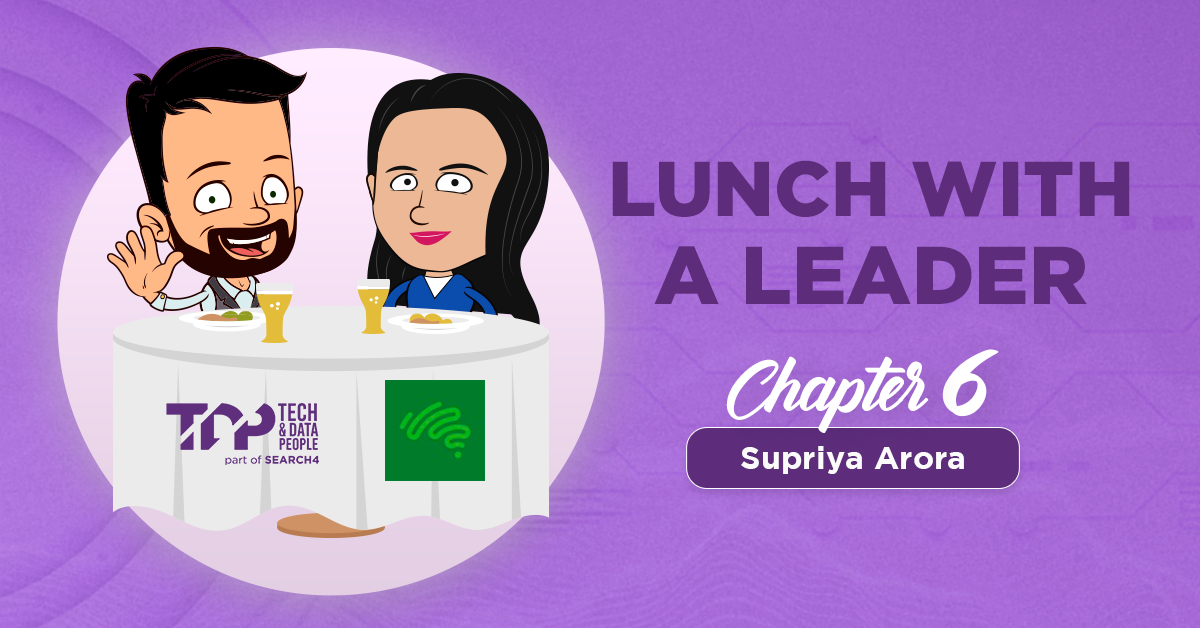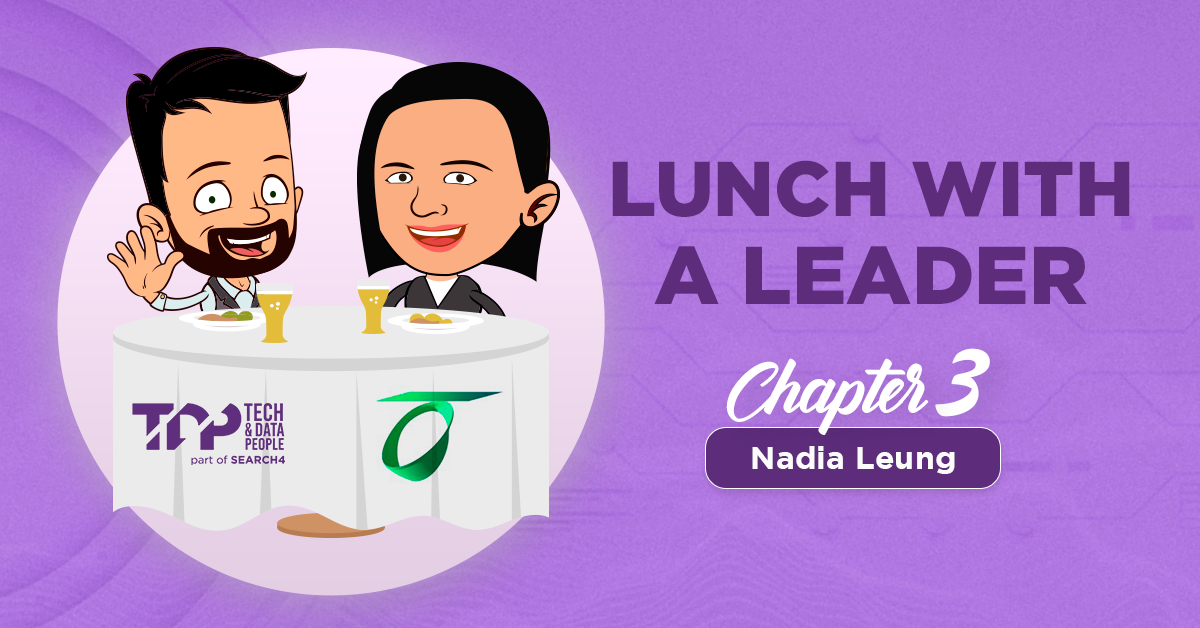Blogs
The Crucial Difference Between Employee Engagement & Employee Experience

When it comes to creating a thriving workforce, employee engagement and employee experience are often used interchangeably. However, while they may seem similar on the surface, they are two distinct concepts that are crucial to the overall health and success of an organisation. Understanding the difference between the two—and how they interact—can help employers build a more engaged, satisfied and productive team.
What is Employee Engagement?
Employee engagement refers to the emotional commitment an employee has to their organisation. It’s the level of enthusiasm and dedication that an employee brings to their role. Engaged employees are motivated, passionate about their work, and actively contribute to the company's success. Engagement is more about the intensity and quality of work rather than job satisfaction alone.
In Australia, only 15% of employees are actively engaged in their roles, according to Gallup’s State of the Global Workplace 2022 report. While this is a global statistic, it’s clear that engagement levels remain low. What does this mean for Australian employers? It indicates a significant opportunity to invest in practices that can turn disengaged employees into highly motivated, committed individuals.
Key characteristics of engaged employees include:
- Motivation: They are driven to do their best work every day.
- Passion: They care deeply about the company’s goals and values.
- Commitment: They are invested in the long-term success of the company.
- High productivity: Engaged employees tend to be more productive and efficient.
What is Employee Experience?
Employee experience, on the other hand, encompasses the entire journey of an employee with a company. From the moment they apply for a job, to their first day on the job, to their interactions with colleagues, and their day-to-day work life, employee experience is shaped by all touchpoints and interactions an employee has within the organisation. It’s more holistic and takes into account every aspect of an employee’s work life, both physical and emotional.
In Australia, 73% of HR leaders agree that employee experience plays a critical role in employee engagement, according to The Australian HR Institute (AHRI). However, it’s not just about the work environment; it’s about creating an experience where employees feel valued, supported and equipped to succeed. As 76% of employees are willing to leave their current employer for one that offers a better experience, the need for organisations to focus on improving the employee experience is more important than ever.
Key factors that make up the employee experience include:
- Work environment: The physical and psychological aspects of the workplace (including flexibility, office design and culture)
- Onboarding: The process of introducing new employees to the company and setting them up for success.
- Company culture: The overall atmosphere, values, and norms within the organization.
- Professional development: Opportunities for growth, learning, and career advancement.
- Work-life balance: How well an organization supports employees in balancing work responsibilities with personal life.
A side by side comparison
While engagement focuses on the emotional commitment of an employee, experience covers the broader scope of their time with the company. Here’s how they differ:
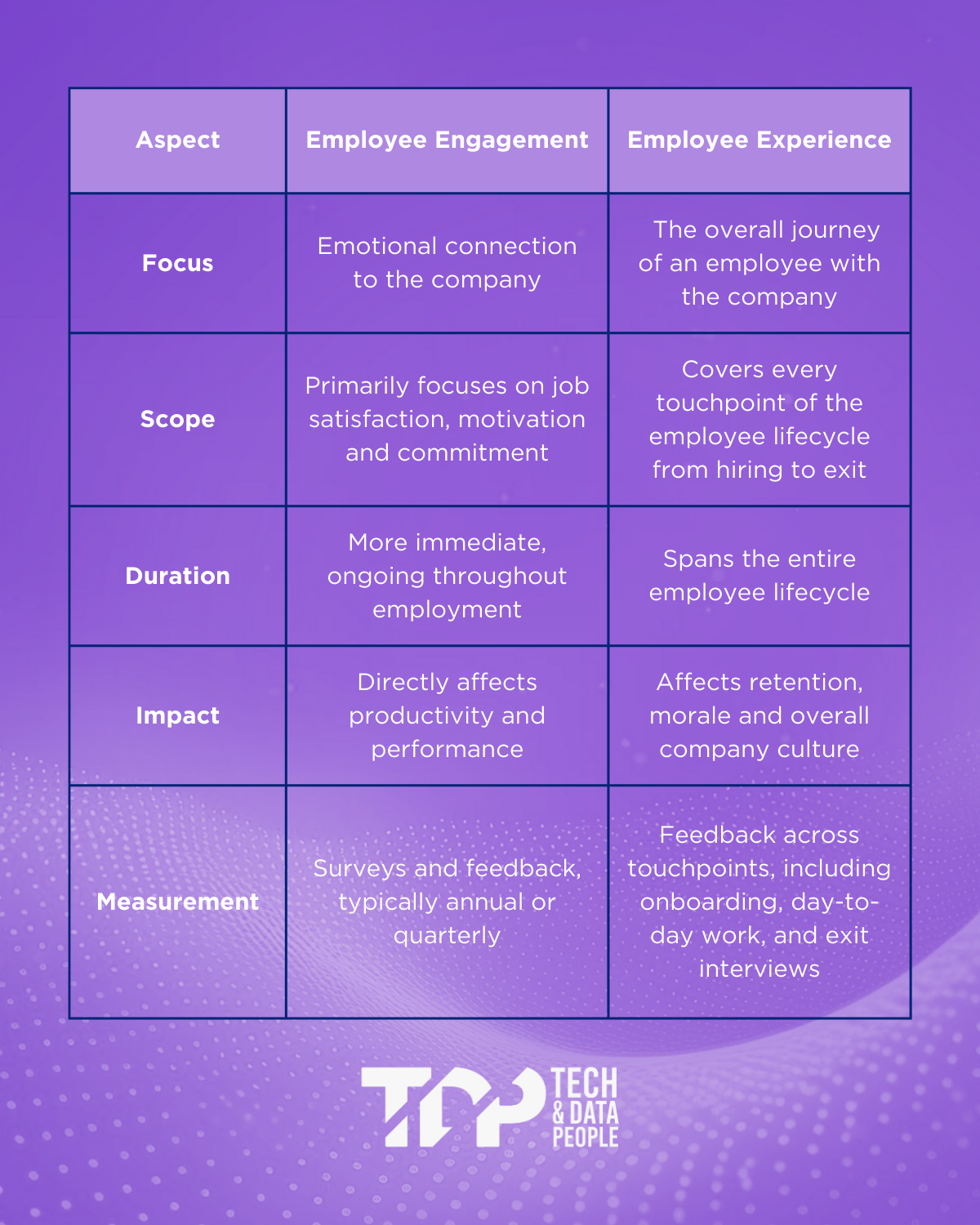
Why do both matter?
While employee engagement and experience play distinct roles in an organisation’s overall success, they work best when aligned.
Creating a positive employee experience can drive higher levels of engagement. For instance, in the tech industry, 61% of workers cite workplace culture as a key factor in their job satisfaction (LinkedIn, 2023). Investing in things like workplace flexibility, professional development opportunities and a healthy work-life balance can dramatically improve both engagement and experience.
83% of Australian workers say that workplace flexibility is essential to improving their experience, and 66% say that flexibility contributes to their sense of belonging at work (PwC, 2023). Flexible working arrangements and creating an inclusive culture where employees feel valued can go a long way toward improving engagement levels.
What’s the right focus for your organisation?
While engagement focuses on the here and now—how employees feel about their work—employee experience looks at the entire employee lifecycle. For companies looking to maximise both, they need to invest in creating positive experiences while actively fostering engagement.
- For Employee Engagement: Ensure that employees have clear expectations, goals and opportunities to grow. Recognise achievements, encourage feedback and provide employees with the resources they need to succeed.
- For Employee Experience: Focus on creating an environment where employees feel supported, valued and appreciated. This includes offering workplace flexibility, providing career growth opportunities and developing a strong company culture.
By recognising that engagement and experience are two sides of the same coin, companies can take a more integrated approach to building a workplace that attracts top talent and keeps them motivated, productive and happy. Investing in both areas creates a thriving workforce that is committed to the company’s success.
